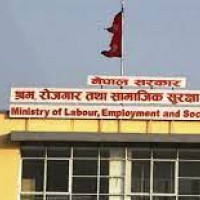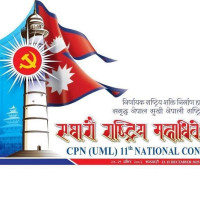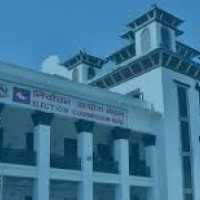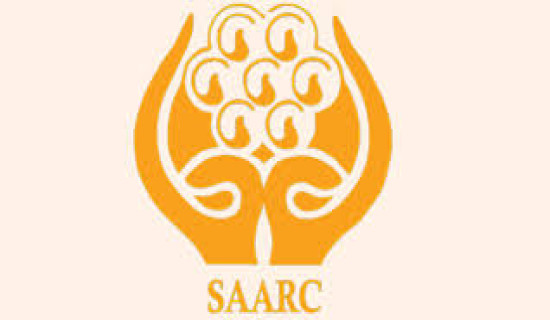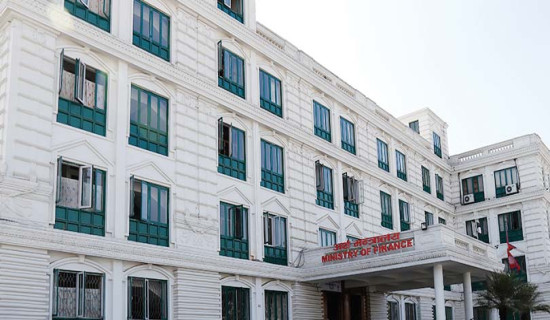- Tuesday, 16 December 2025
Experts stress budget increase in R&D
Kathmandu, Jan. 25: Poor budget allocation in research and development has negatively impacted the innovation and research in the country.
While federal budget is very low about 0.3 per cent of the total budget, only 0.011 per cent of the total budget earmarked to the education sector is separated for innovation, experts said at the first National Innovation Conference 2023 organised by the Nepal Academy of Science and Technology (NAST) on Tuesday.
Member of the National Planning Commission (NPC) Dr. Ram Kumar Phuyal said that the federal budget on research and development (R&D) is very low. "The budget to the Ministry of Education, Science and Technology (MoEST ) is itself less than the actual need. Only 0.011 per cent budget to the MoEST is earmarked for R&D activities in the education, science and technology sector in the country," he said.
Only 0.3 per cent of the total budget is allocated for the overall research and innovation in the country. On an average about Rs. 17 million to Rs. 25 million is allocated for the science and technology. For example, allocation to research and innovation on science and technology in the current fiscal year is just Rs. 23 million. The total budget for this is Rs. 1793.8 billion.
"At least 1.5 per cent of the national budget is expected to mobilise in the science and technology by 2030, the year Nepal aspires to become a middle-income country," said Dr. Phuyal.
According to the experts and scientists, there are policies for better research and innovation environment but implementation is below expectation.
Vice-Chancellor of the Kathmandu University Dr. Bhola Thapa said that advancing traditional knowledge in collaboration with the latest technology is the innovation need of the day in Nepal. "Replacing our rich heritage and products with imported instrument is not the innovation," he said and suggested the young innovators to find the solutions of the problems faced by Nepali farmers, business community and other sectors.
Likewise, Vice-Chancellor of the Mid-Western University Dr. Nanda Bahadur Singh said that no expert, minister or even the NPC has ever discussed about allocating sufficient budget to the R&D.
"Israel has allocated 5.88 per cent of the GDP for R&D. About 6 per cent of GDP should be allocated to education, but Nepal has allocated only 4.6 per cent of GDP in education budget," he said while stressing the need for increasing budget on research and innovation and formulating law for patent rights in Nepal.
He also said that corruption has marred the higher education sector which has discouraged research environment at the universities.
Addressing the summit, Minister for Education, Science and Technology Shishir Khanal said that innovation means the future of technology.
"We need to work on nano technology that could help people and communities. We need to find modern technology that are appropriate for Nepali society to support in the development of agriculture," he suggested the science body and innovators.
He also said that there was also a challenge to retain talent and stop brain drain.
Minister Khanal informed that the government was currently working an action plan for the development of science and technology in the country. Draft of the plan has already been prepared.
Arun Bhandary, Chief Executive Officer of NAXA, one of the organisers of the summit and member of the National Innovation Digital Network (NIDN), said that accessibility and connectivity play vital role in innovation ecosystem. "Local government and governance are the large areas that need innovation and area to implement it. We have invited local innovators at various provinces and now are working with them," he said.
Former Additional Secretary at NITI Aayog of India, R. Ramanan who is also a former (First) Mission Director Atal Innovation Mission, said that it is important that GDP of any country grows and people have better life so there should be a promotion of innovation.
According to him, use of robots, 3D printing in manufacturing, automation helps enhance productivity and capacity of production plants.
"Marketing your products across the globe with the help of digital technology including cloud services is easy. Technology and innovation have supported in creation of more than 100 unicorns in India in the last five years. There is a high potential in Nepal as well," Ramanan said addressing the summit virtually.
Dr. Rabindra Dhakal, Head of Faculty of Technology at the NAST, said that the conference is important for development and extension of research and development and maximisation of science, technology and innovation and research in line with the federal structure and maintaining the provincial balance as well as to create a conducive environment for increased investment through cooperation and coordination among those bodies.
He also said that it is important to connect the innovators to the market and economy so there is a need to formulate policy that promotes innovation in various areas including science and business. To motivate the innovators, international experts and scientists will be invited to the conference to share their ideas while business leaders have also talk about connecting innovators with the business and industry.
The conference has also discussed about the national science, technology and innovation policy, innovation index, innovation areas, and innovation ecosystem for sustainable existence.
The NAST has organised the conference in collaboration with The Asia Foundation, Robotics Association of Nepal (RAN) and NAXA, while Ministry of Education, Science and Technology, Federation of Nepalese Chambers of Commerce and Industry and USAID were the partners of the event.




